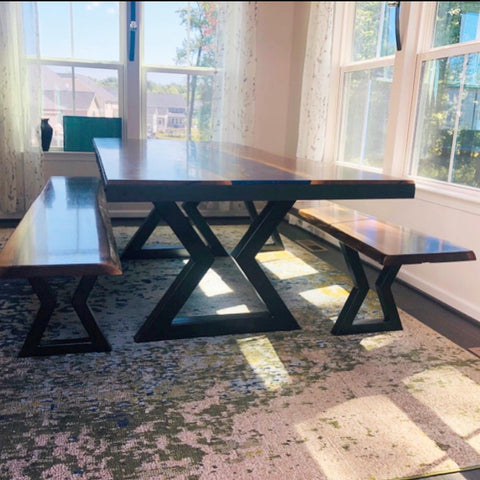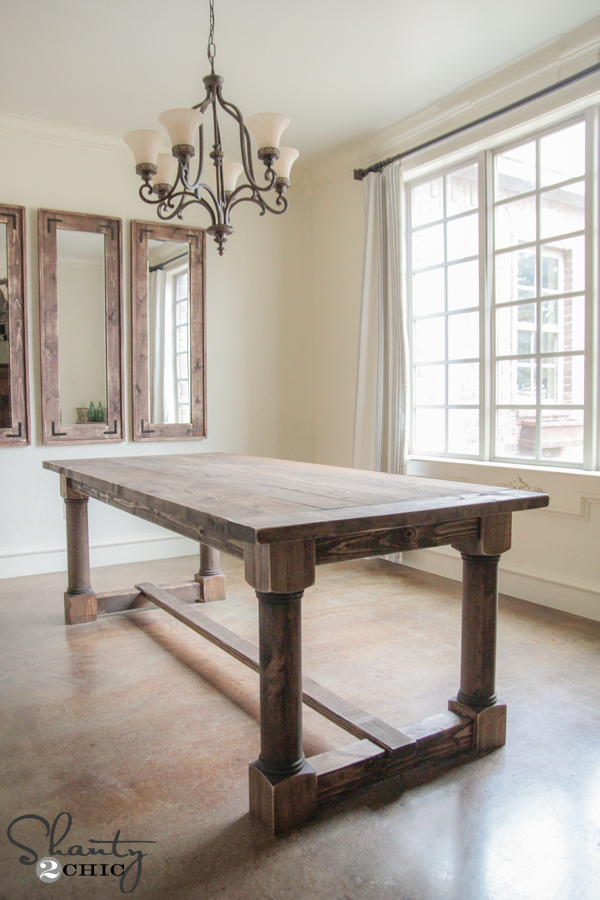The Top Trends in Dining Room Table Legs You Need to Know
Wiki Article
From Typical to Modern: Discover the Suitable Eating Room Table Legs for Your Style
While timeless designs such as cabriole and turned legs stimulate a sense of timeless refinement, modern styles like hairpin and geometric choices offer a possibility for striking visual passion. As you take into consideration these elements, the question stays: how can you effortlessly incorporate these diverse leg styles to produce an unified dining experience?Understanding Table Leg Styles
The variety of dining-room table leg styles can dramatically affect both the aesthetics and capability of the area. Each leg style adds one-of-a-kind useful features and aesthetic components, accommodating diverse style choices and usage requirements. Understanding these designs is essential for picking the ideal table that lines up with your total interior decoration vision.For circumstances, conical legs provide a tidy, timeless appearance that can enhance a room's style, while stand bases supply stability and make best use of legroom, making them excellent for smaller sized spaces. Hairpin legs, a hallmark of mid-century modern-day style, introduce an industrial flair, permitting a ventilated, open feel. Trestle legs evoke rustic charm, providing durable assistance and a sense of timelessness.
Wood legs can bring heat and texture, whereas metal alternatives commonly convey a smooth, modern vibe. Inevitably, comprehending table leg styles is important for creating a cohesive eating area that reflects personal style while guaranteeing functionality and comfort.
Conventional Table Leg Options
When picking dining-room table legs, traditional choices typically personify classic elegance and workmanship. These designs mirror an abundant heritage and a dedication to quality, making them ideal for those that value classic aesthetic appeals.Among the most renowned traditional leg designs is the cabriole leg, defined by its graceful curved form. This style typically features ornamental makings and is most typically found in Queen Anne and Chippendale furniture. One more preferred choice is the turned leg, which flaunts a collection of smooth, rounded forms that give a timeless look while keeping stability.
In addition, the straight leg, while straightforward, supplies a strong and unadorned framework that can mix perfectly with a range of tabletop designs. For those attracted to ornate outlining, claw-and-ball feet legs evoke a feeling of splendour and can work as a magnificent focal point in any kind of dining space.
Last but not least, stand bases, although not strictly legs, supply an alternate traditional alternative that enables ample legroom and can be magnificently sculpted. Each of these traditional leg styles adds to the general ambiance of an eating area, weding feature with aesthetic charm.

Modern Table Leg Styles
Modern table leg designs use a varied variety of designs that stress innovative products and tidy lines. These styles commonly prioritize functionality while functioning as striking centerpieces within an eating area. Minimalist visual appeals prevail, with legs crafted from products such as steel, glass, and crafted timber, which contribute to a ventilated and contemporary feel.One popular design is find out the barrette leg, characterized by its slender, conical structure that gives security without frustrating the table top (dining room table legs). This style is usually found in mid-century modern-day furnishings and can effortlessly enhance different table forms. Another fad is the usage of geometric shapes, where legs might tackle angular or unbalanced forms, adding visual rate of interest and a touch of artistry

Mixing Styles for Special Spaces
Frequently, property owners seek to develop one-of-a-kind eating rooms that the original source reflect their individual style by blending various design aspects. This strategy allows for the incorporation of diverse appearances, causing a harmonious yet distinct setting. For circumstances, pairing a rustic wood table with streamlined, contemporary steel legs can create an appealing contrast that raises the space's general appeal.In addition, integrating vintage table legs with contemporary tabletops can evoke a sense of history while maintaining a contemporary sensibility. Such mixes not only showcase individual preference but likewise motivate creativity, permitting home owners to curate an area that feels both personal and inviting.
Color plays a vital duty in this mixing procedure; selecting table legs that complement or contrast with the existing color pattern can improve aesthetic hop over to these guys rate of interest. For instance, whitewashed legs can soften the daring of a dark table surface, creating a well balanced aesthetic.
Tips for Picking the Right Legs
Choosing the right table legs is crucial for attaining both functionality and visual appeal in your eating space. Begin by taking into consideration the general design of your space. Traditional settings take advantage of legs that feature detailed makings or turned designs, while modern rooms may call for smooth, minimal designs.Following, assess the height and security of the legs. dining room table legs. Standard table range between 28 to 30 inches in elevation, so guarantee the legs enhance this measurement for convenience. Additionally, robust products, such as hardwood or steel, can improve stability and long life
Evaluate the leg form too-- options include straight, tapered, or stand layouts. Straight legs use a classic look, while tapered legs can include a touch of beauty. Pedestal bases supply adequate legroom and are ideal for smaller rooms.
Conclusion
In summary, choosing the perfect dining-room table legs calls for careful consideration of both traditional and modern designs. Typical options such as cabriole and turned legs use classic sophistication, while modern designs like hairpin and geometric shapes offer a contemporary touch. By balancing leg design, height, and product with the overall design, a natural and welcoming ambience can be achieved. Inevitably, the chosen table legs ought to show the preferred visual, improving the eating experience within the room.The variety of eating room table leg designs can considerably influence both the appearances and performance of the space. Eventually, understanding table leg designs is essential for creating a natural dining location that shows individual style while making certain functionality and convenience.One of the most legendary typical leg styles is the cabriole leg, identified by its graceful curved shape. Straight legs provide a classic appearance, while tapered legs can add a touch of style.In summary, choosing the suitable eating area table legs needs careful consideration of both typical and modern styles.
Report this wiki page